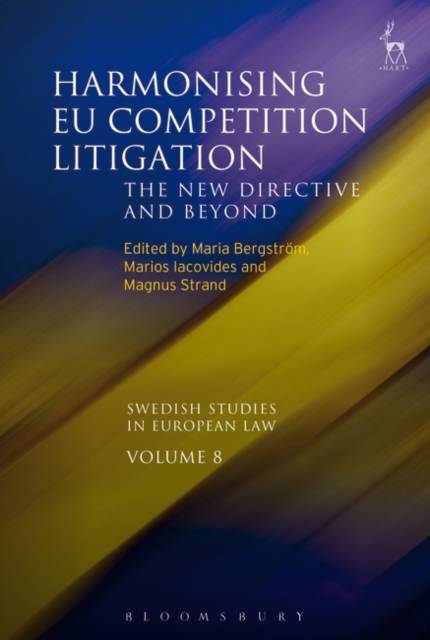
Je cadeautjes zeker op tijd in huis hebben voor de feestdagen? Kom langs in onze winkels en vind het perfecte geschenk!
- Afhalen na 1 uur in een winkel met voorraad
- Gratis thuislevering in België vanaf € 30
- Ruim aanbod met 7 miljoen producten
Je cadeautjes zeker op tijd in huis hebben voor de feestdagen? Kom langs in onze winkels en vind het perfecte geschenk!
- Afhalen na 1 uur in een winkel met voorraad
- Gratis thuislevering in België vanaf € 30
- Ruim aanbod met 7 miljoen producten
Zoeken
Harmonising EU Competition Litigation
The New Directive and Beyond
€ 84,95
+ 169 punten
Omschrijving
This volume in the Swedish Studies in European Law series, produced by the Swedish Network for European Legal Studies, heralds the new harmonised regime of private enforcement of EU competition law. In 2013, the Commission issued a Communication and Practical Guide to the quantification of harm in antitrust litigation and a Recommendation on collective redress. In 2014, the long-awaited Directive on actions for damages for infringements of EU competition law was finally adopted. In 2016, the Commission is expected to issue guidelines on the passing-on of overcharges. This book examines these recent developments and offers the perspectives of judges, officials, practitioners and academics.
With a preface by Judge Carl Wetter of the General Court, the book explores five different themes. In section one, the main policy issues and challenges are presented. In section two, the new regime is placed in the bigger picture of recent EU law developments. In section three, the nexus between private enforcement and transparency is investigated. A comparative perspective is offered in section four by looking into private enforcement in five Member State jurisdictions. Finally, issues relating to causation, harm and indirect purchasers are explored in section five.
With a preface by Judge Carl Wetter of the General Court, the book explores five different themes. In section one, the main policy issues and challenges are presented. In section two, the new regime is placed in the bigger picture of recent EU law developments. In section three, the nexus between private enforcement and transparency is investigated. A comparative perspective is offered in section four by looking into private enforcement in five Member State jurisdictions. Finally, issues relating to causation, harm and indirect purchasers are explored in section five.
Specificaties
Betrokkenen
- Uitgeverij:
Inhoud
- Aantal bladzijden:
- 384
- Taal:
- Engels
- Reeks:
- Reeksnummer:
- nr. 8
Eigenschappen
- Productcode (EAN):
- 9781509921164
- Verschijningsdatum:
- 26/04/2018
- Uitvoering:
- Paperback
- Formaat:
- Trade paperback (VS)
- Afmetingen:
- 156 mm x 234 mm
- Gewicht:
- 526 g

Alleen bij Standaard Boekhandel
+ 169 punten op je klantenkaart van Standaard Boekhandel
Beoordelingen
We publiceren alleen reviews die voldoen aan de voorwaarden voor reviews. Bekijk onze voorwaarden voor reviews.








